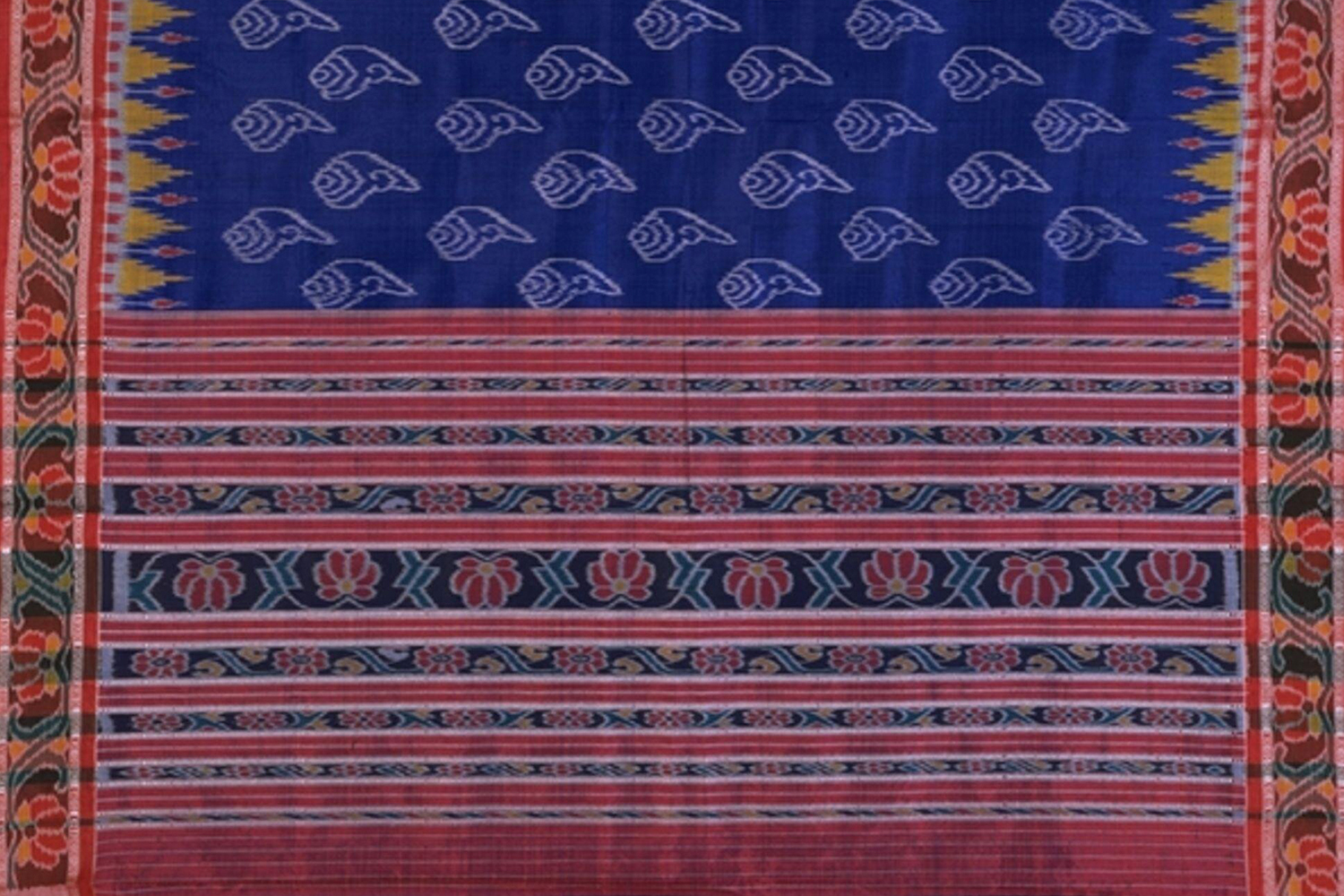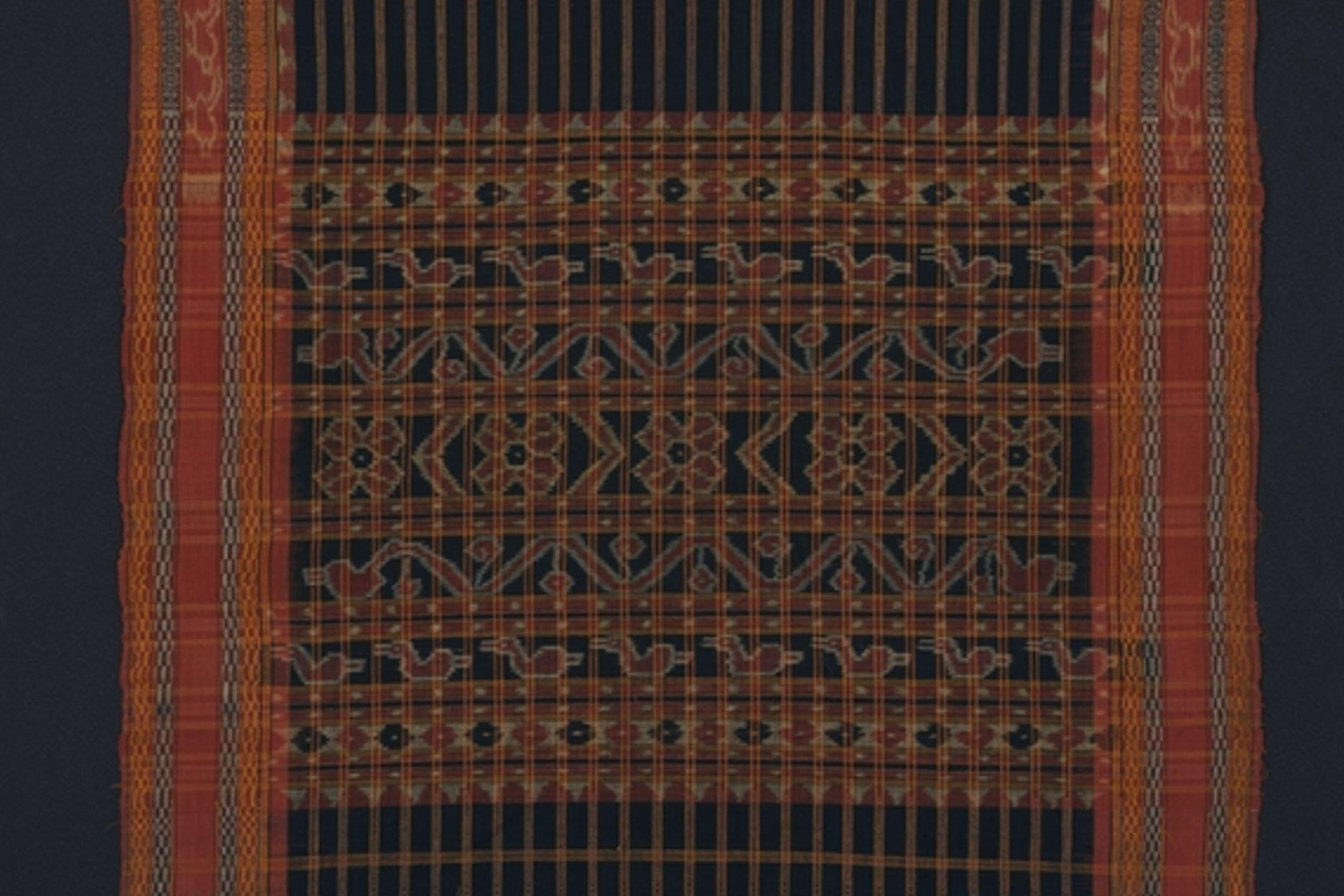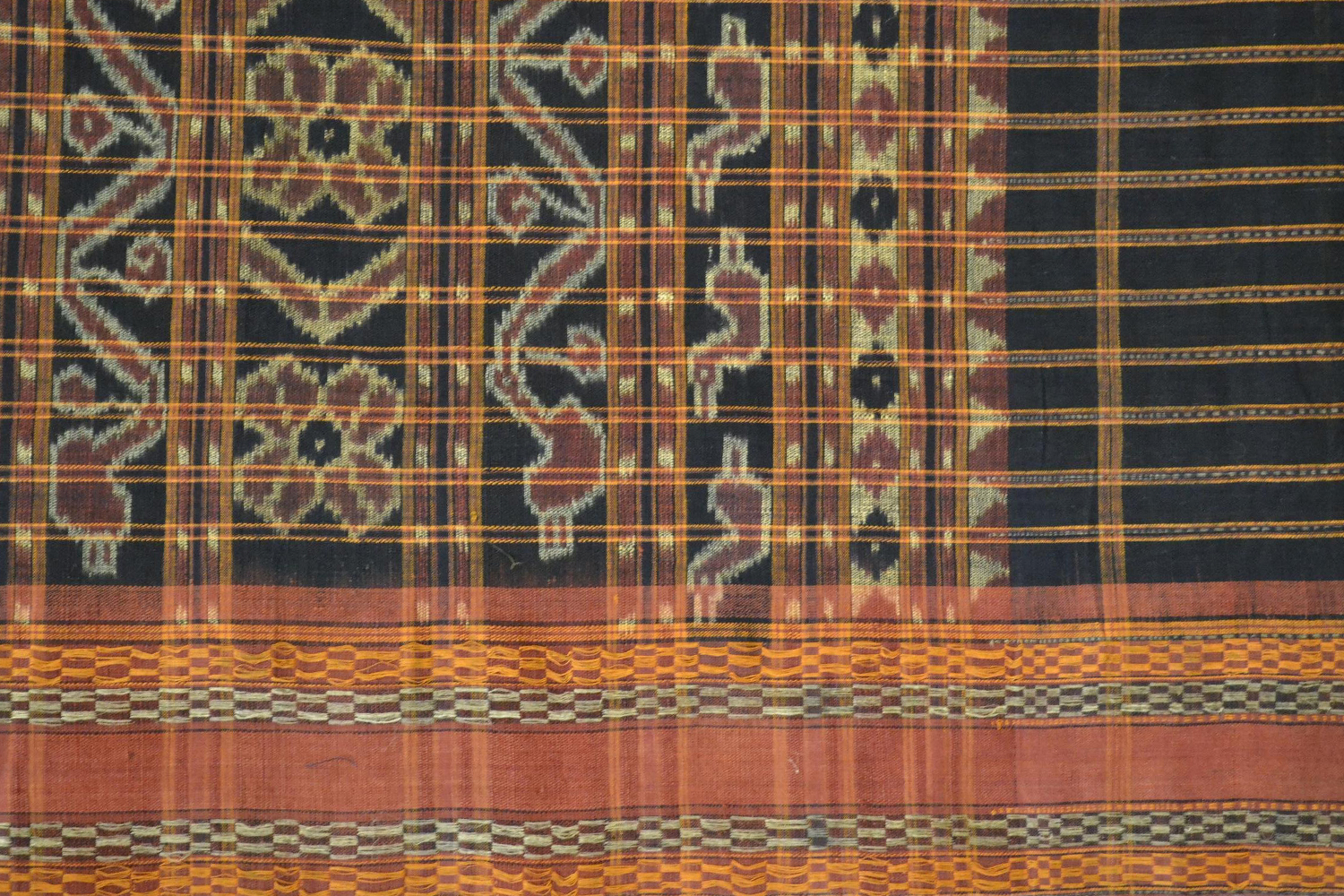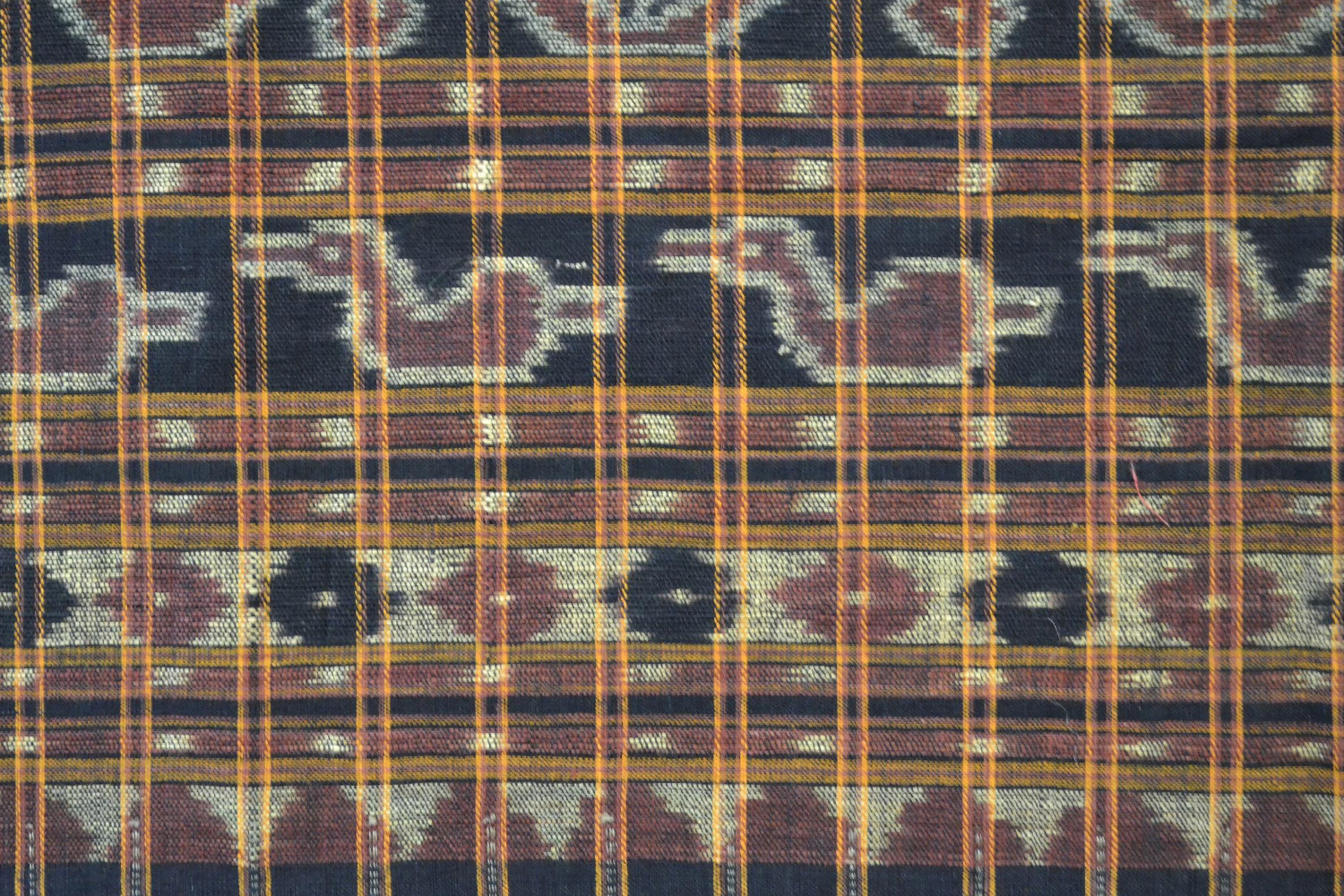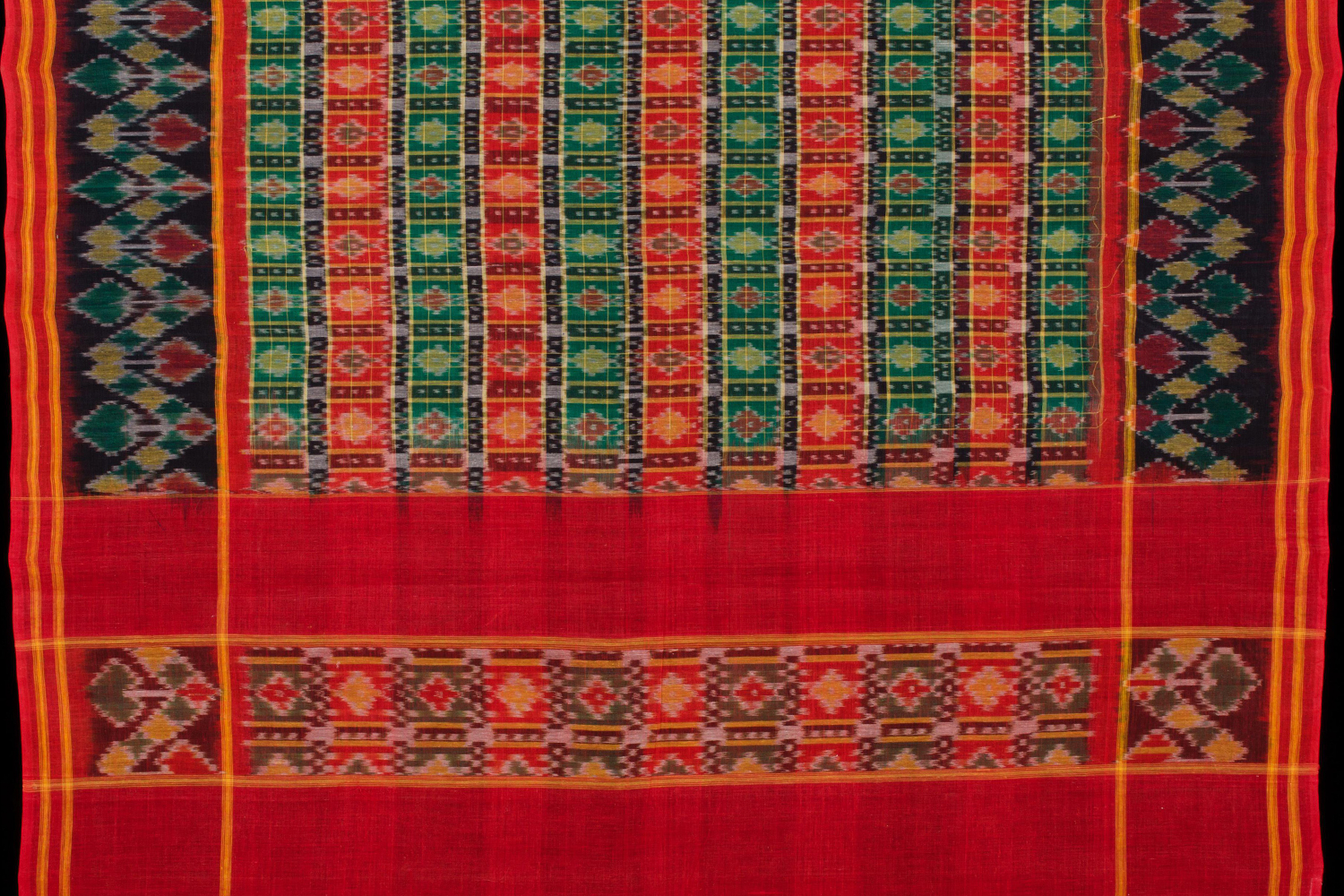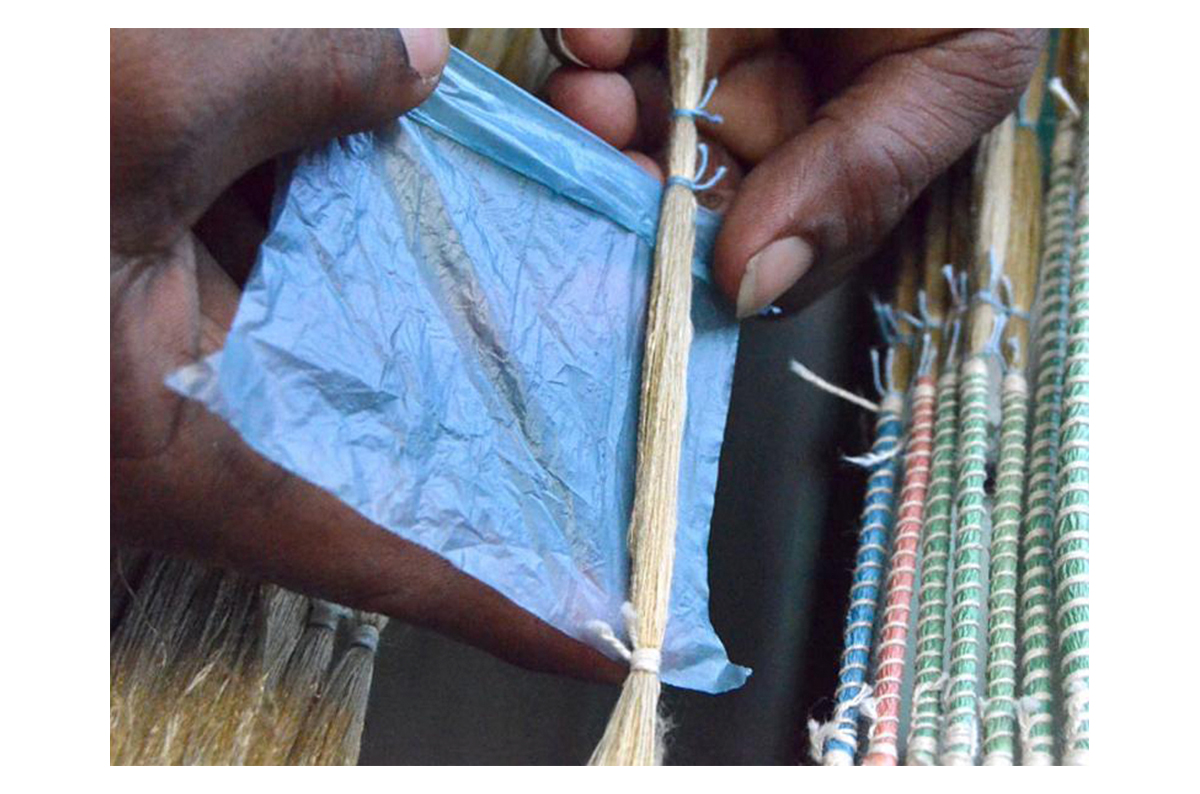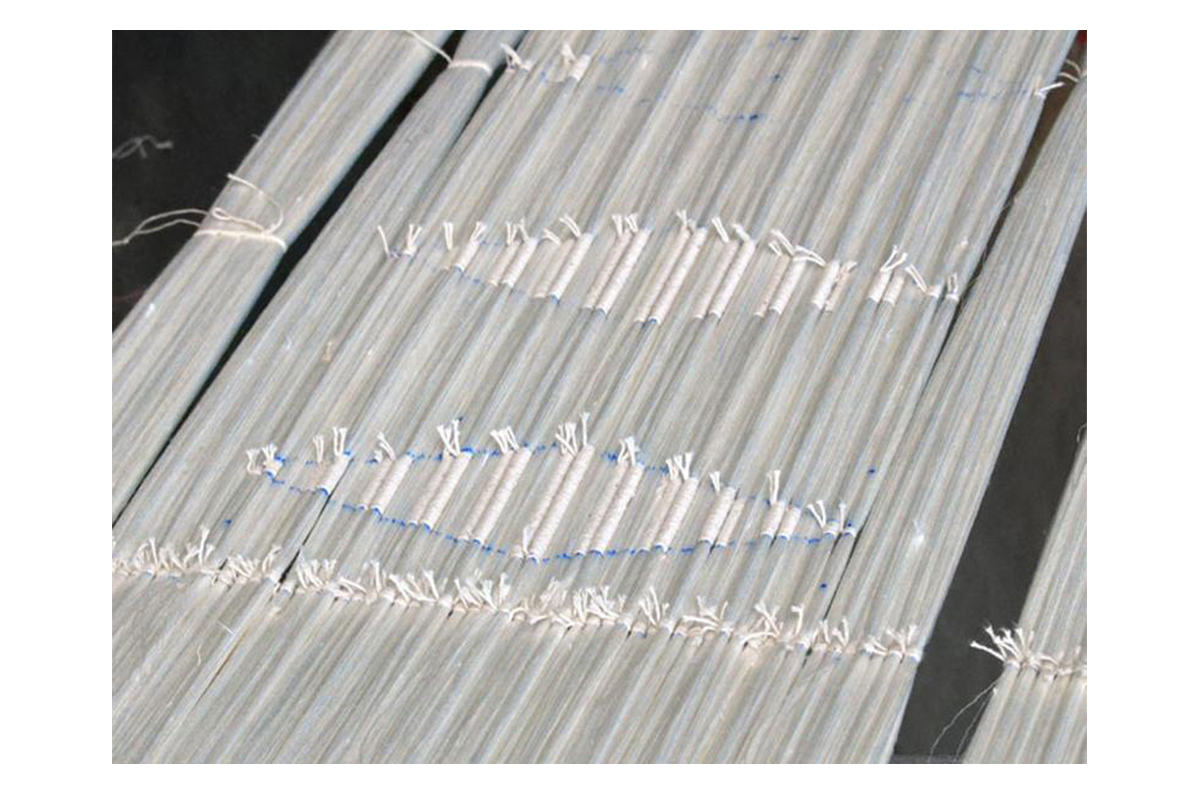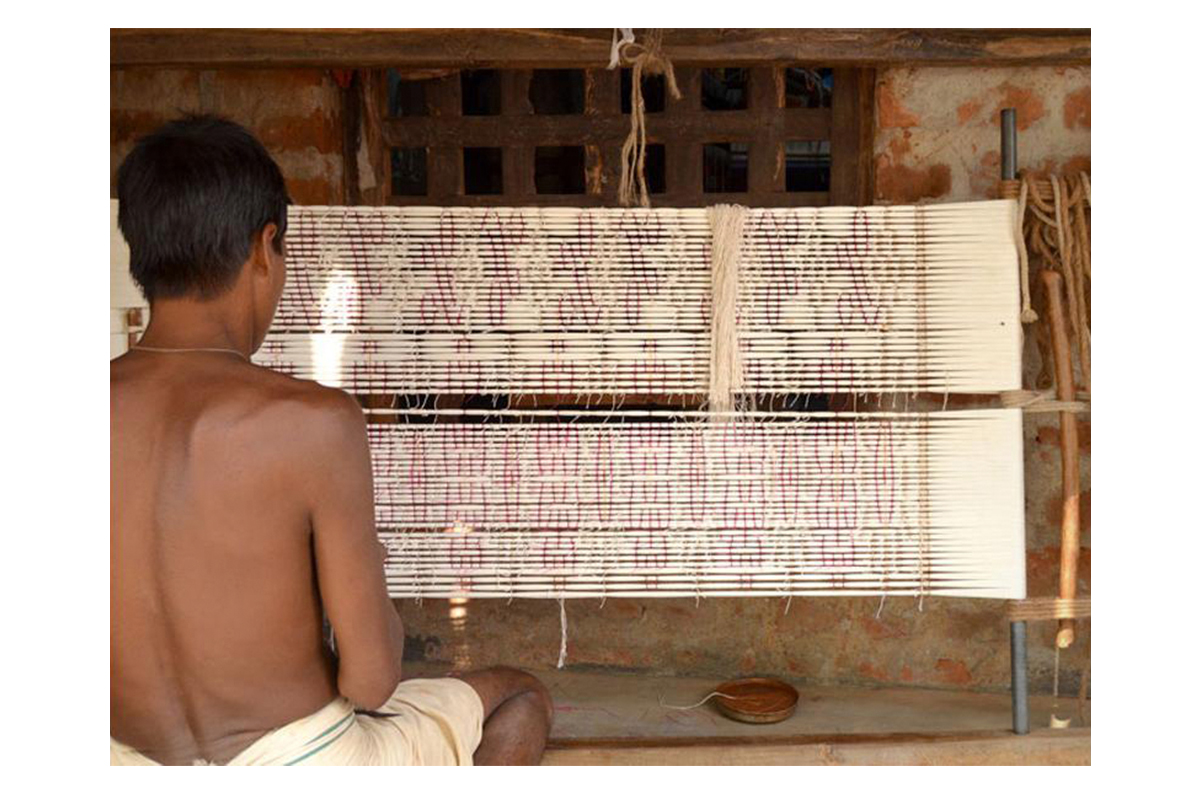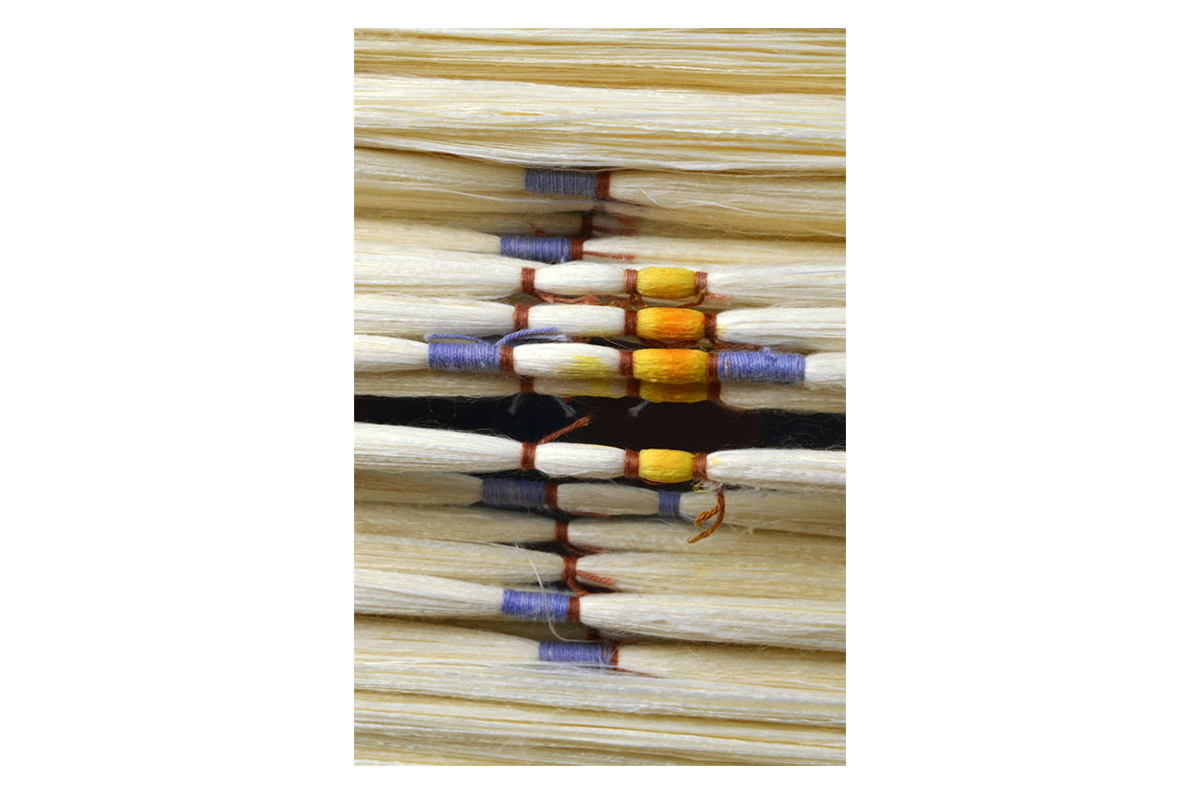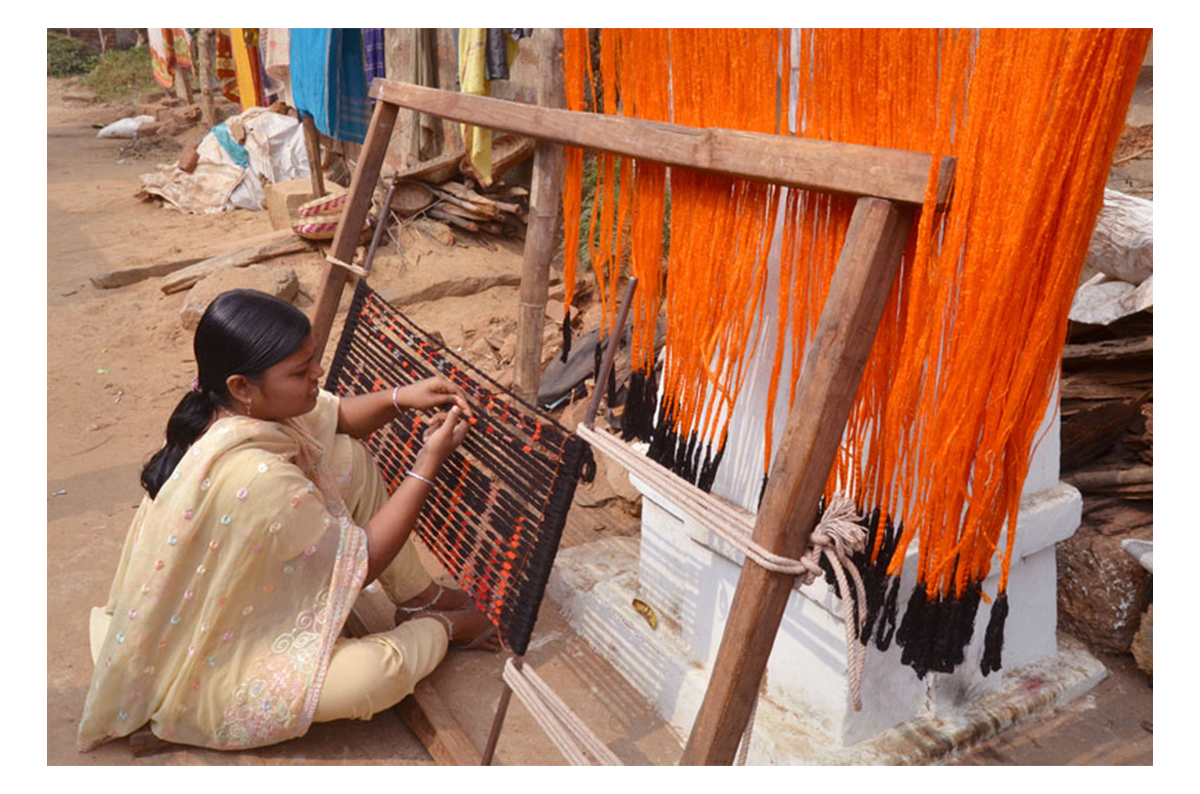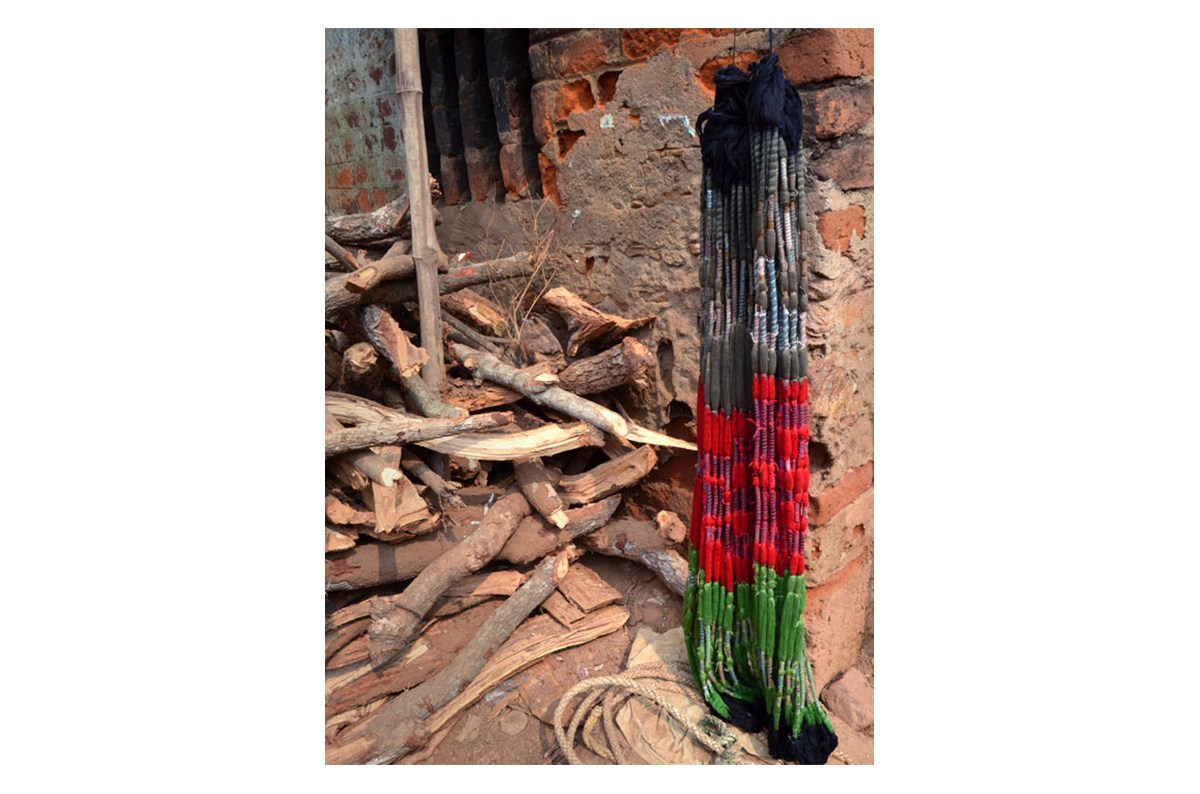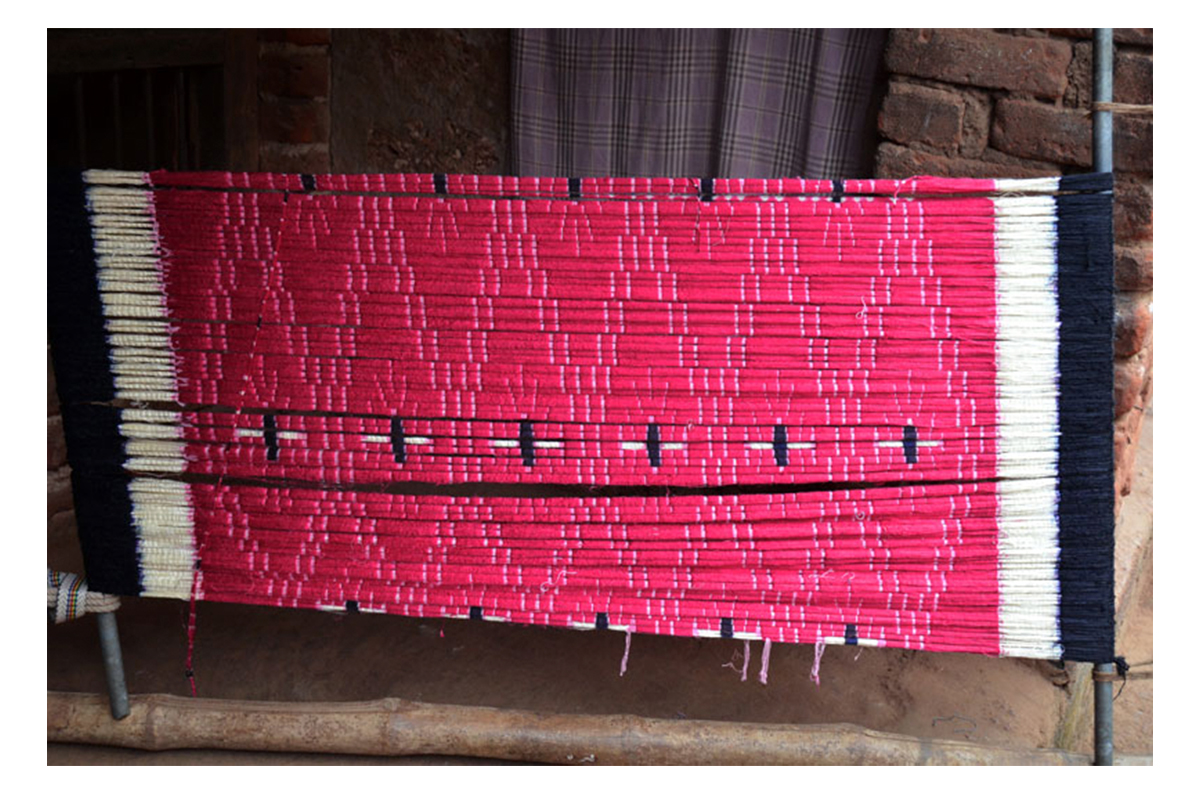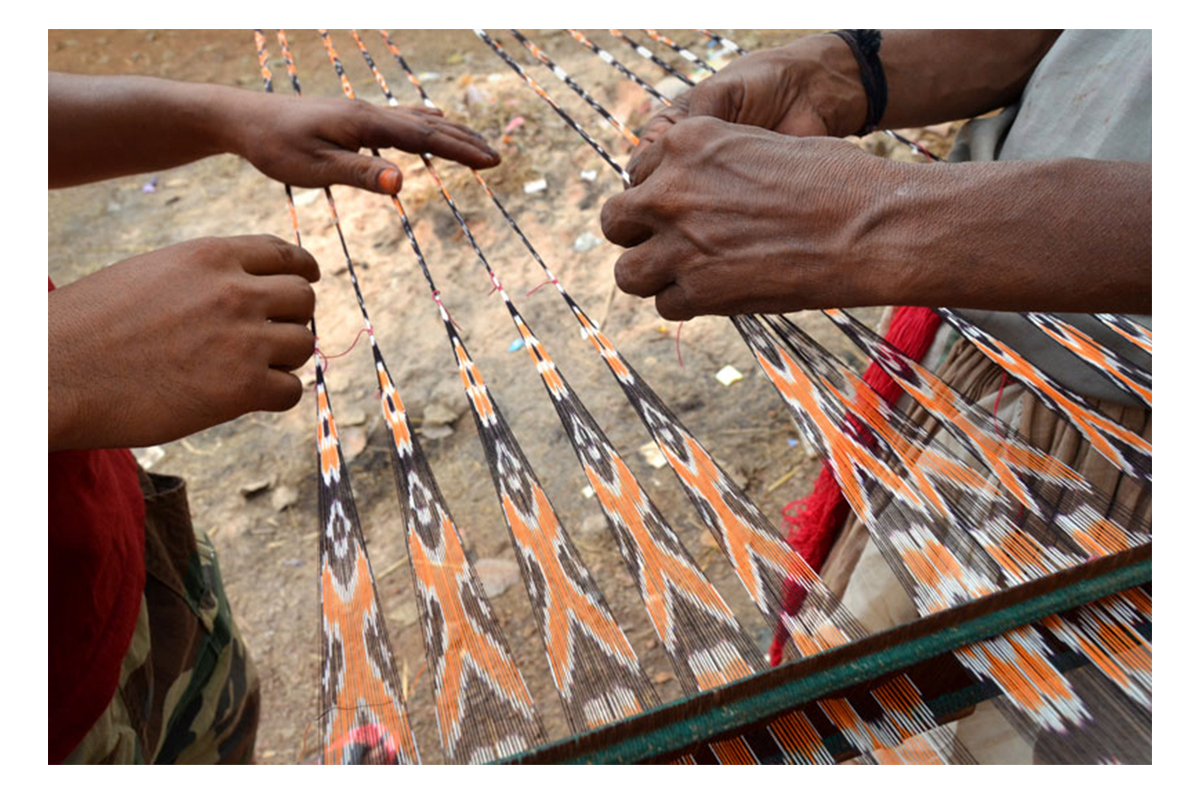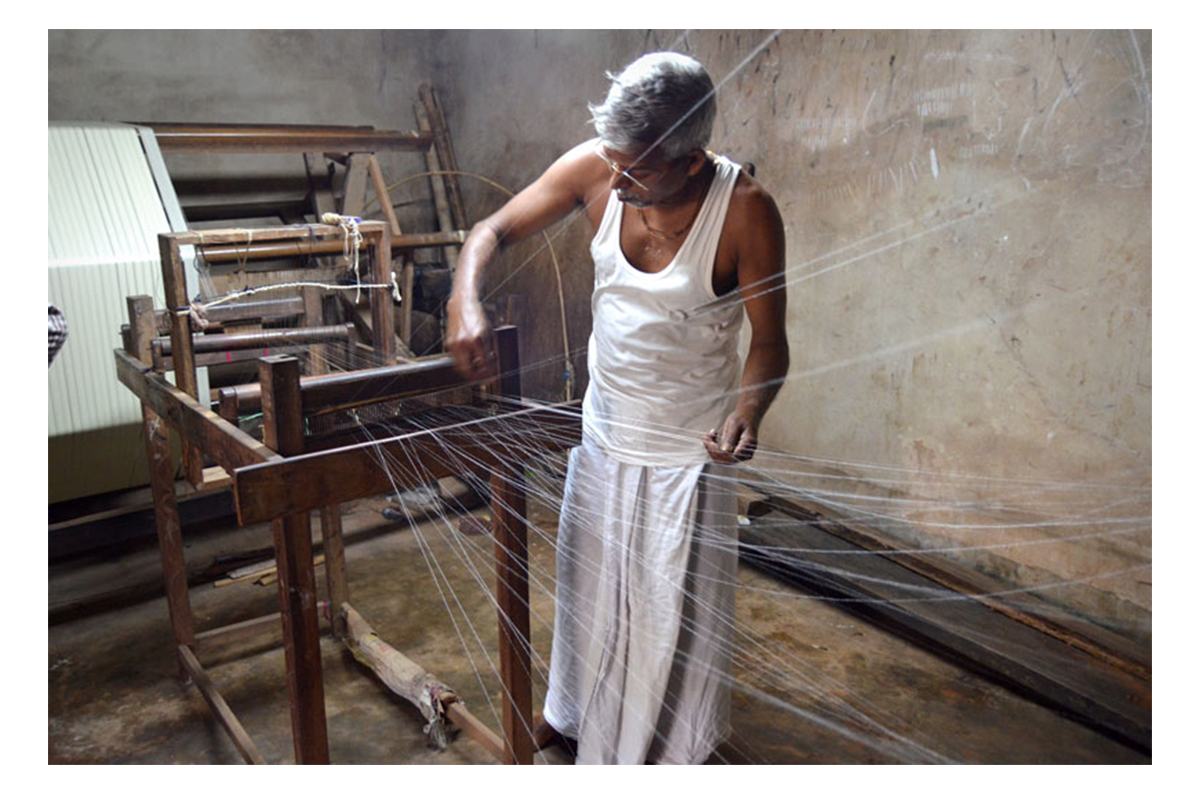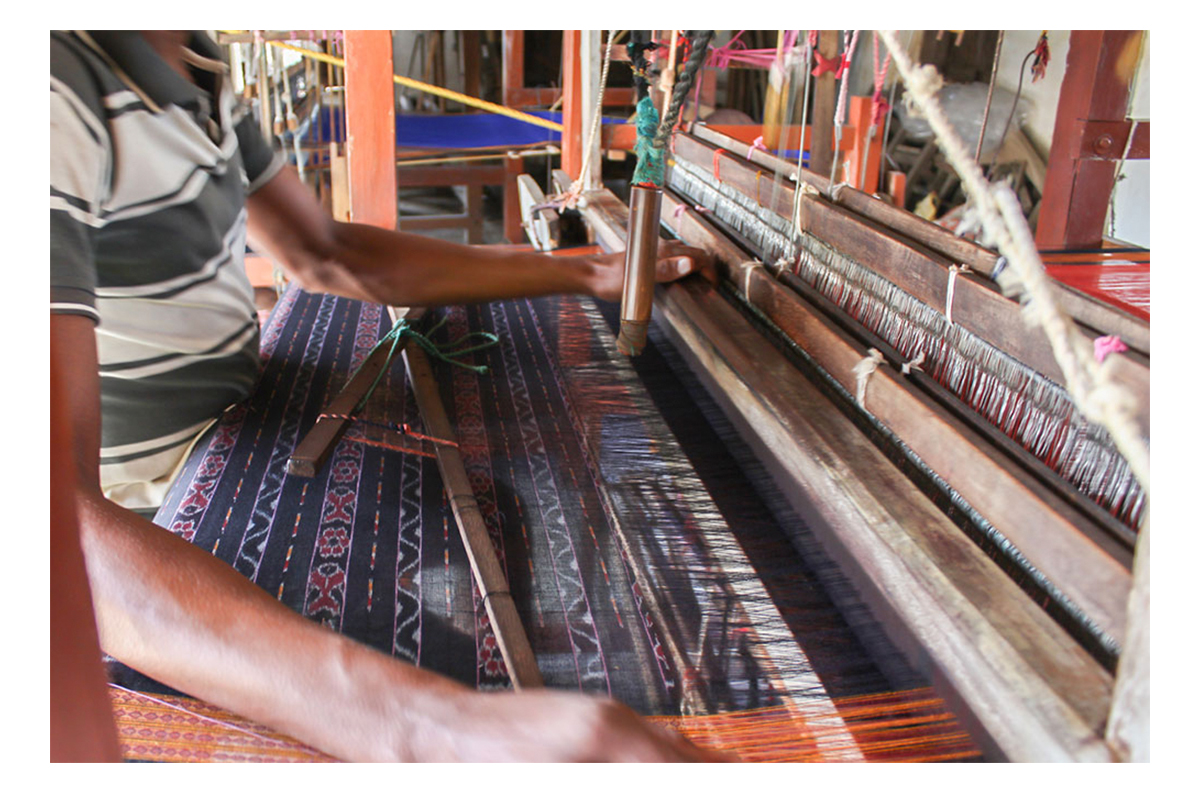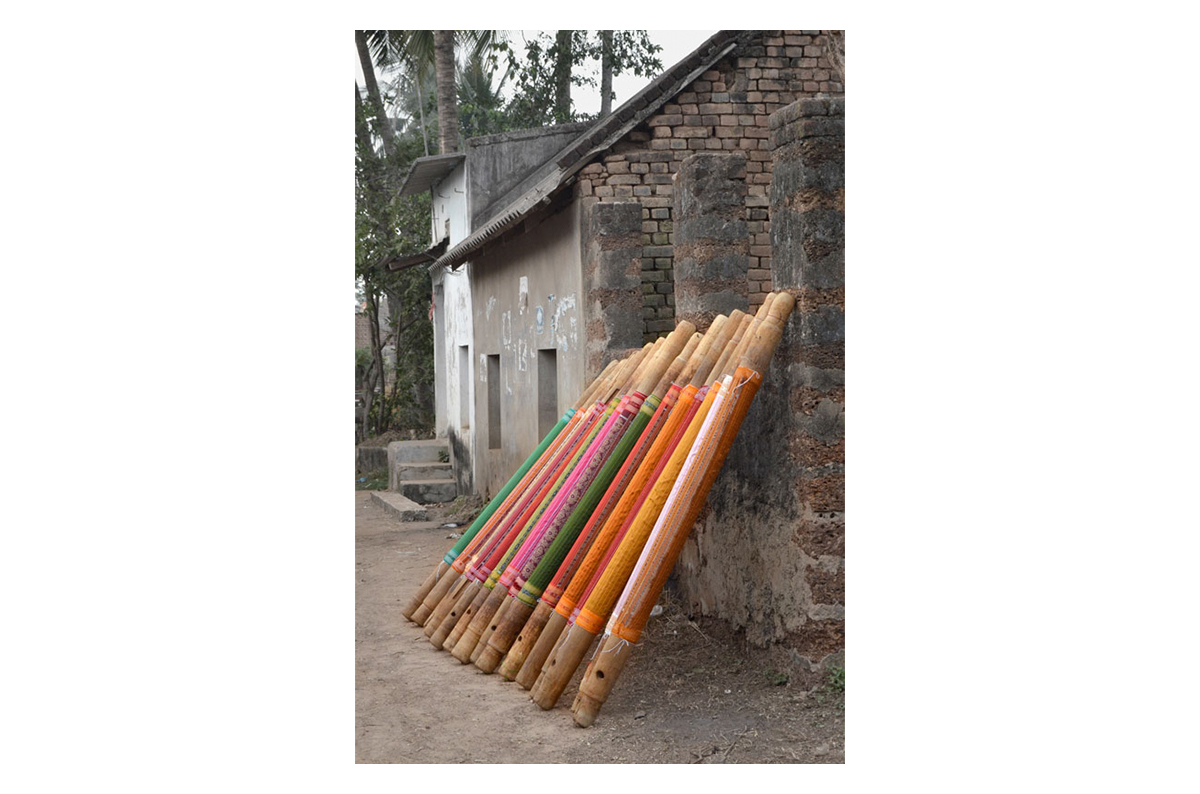ARTICLE
Odisha Ikat
A technique of resist-dyed ikat weaving practised in Odisha, Odisha ikat is also known by the name Odisha bandha. It is characterised by a curvilinear arrangement of motifs, as well as feathered outlines worked primarily in weft-ikat — a complex process in which only the weft yarns are resist-dyed and require readjustment after each pass of the shuttle.
The origins of the Odisha bandha are unclear. While the oldest existing bandha pieces date to the early decades of the twentieth century, some historians date the technique to antiquity, going by the use of the Bichitrapuri pattern as well as the names of prominent motifs such as surya vandha, gaja vandha, vichitra and vichitrangada (elephant and sun motifs), which have been mentioned in Varna Ratnakara, a fourteenth-century prose work written by Jyotisvara. A document dated 1719, chronicling the activities at the Jagannatha Temple, Puri, refers to a bandha gita govinda being woven in Nuapatna, near Cuttack, suggesting that the technique used to weave what is now known as Gitagovinda khandua existed in the region at the time. Made of silk, these ritually significant cloths have a shloka or stanza from the Gita Govinda, a 12th century devotional poem by Jayadeva, woven into the main field using weft ikat.
At present, there are two primary centres of ikat weaving in Odisha — the Sambalpur-Bargarh region in western Odisha and the Cuttack district, closer to the coast. Sambalpur ikats are woven by the Bhulia Meher community, who are believed to have migrated to Odisha from Madhya Pradesh in the eighteenth century. In the Cuttack region, ikat weaving is practised by the Gaudiya Patra and Asani Patra communities in the town of Nuapatna as well as the villages of Badamba, Maniabandha, Narasinghpur and Tigiria.
The traditional bandha process entailed the use of natural dyes derived from powdered lac, madder, myrobalan, indigo and local trees such as the Kamala and the Lodhra trees. By the 1950s, however, synthetic dyes became commonplace. Sarees woven with the Odisha bandha technique feature two pallus on either end in a design known as domuha (from do, meaning “two,” and muha meaning “pallu” or “the transverse border of the saree”). Sarees for everyday use had shorter, less elaborate pallus, while those made for special occasions had pallus with supplementary weft-ikat woven in bands of motifs and patterns. These bands of weft-ikat in the pallu are called phool and can vary from two bands (duiphulia) to twelve (baraphulia). Traditionally, the pallu panels and the main field included simple motifs such as danti (teeth), kumbha (temple) and small birds, animals and flowers. The sarees were traditionally shorter — 4 metres long and less than 1 metre wide — than the current style, and were worn without a bodice. Today, the sarees woven in the region feature only one pallu.
Each centre of production has its own distinct weaving styles and motifs. Traditionally, ikat textiles from western Odisha, such as Sambalpur, Balangir, Bargarh, Sundergarh, Subarnapur and Mayurbhanj, were made of cotton, although today, weavers of the region have adopted ikat weaving in silk. The two textiles unique to Nuapatna are the khandua and the Gitagovinda khandua or the Gitagovinda pheta. The region is also known for two types of sarees, namely the saktapar and the bichitrapar, which are worn on special occasions.
The main field in traditional Nuapatna sarees had heavy motif work, featuring patterns such as elephants, fantastical creatures, lions, parrots, large flowers and creepers, stars and trellises. These sarees were also not domuha and were the same length as conventional sarees. More contemporary designs feature newer patterns such as large squares (known as a kothari pattern) and newer layouts of motifs in the main field. Weavers also experiment with landscapes, geometrical layouts and complex figures in the pallu and main field. Traditional ikat weaves were made of tussar silk cultivated in Nuapatna, although more contemporary weaves use cotton and mulberry silk sourced from Bengaluru.
Traditionally, the warp was prepared in open air, with the help of separating poles or warping frames, although this has been replaced by a warping drum, especially in Nuapatna. If the design is warp-based, the weaver will transfer the design to the yarn and tie the areas to resist the dyes before the dyeing process. Once the dyeing process is complete, the warp is starched and mounted on the loom. The weft is prepared on a frame with upright sticks or separating cords. After the weft has been grouped and sub-grouped, the design is marked and ties are added before dyeing. If a smaller area of the yarn requires dyeing, the dye is applied by hand using a brush. Once dyed, the weft yarns are wound onto pirns in the order corresponding to the design.
Weavers primarily use pit looms for weaving, although frame looms are also used in the Nuapatna cluster, with a throw shuttle used for a weft-ikat pattern and a fly shuttle used for a warp-ikat pattern. The fabric is finished by starching and wound on a roller before being folded.
The Odisha bandha became popular during the 1980s and ’90s, owing to a rise in popularity of Indian handlooms. Today, the technique continues to have a strong local market but there has not been an evolution in terms of the fabric or designs. The technique also faces competition from cheaper imitation fabrics featuring printed, as opposed to woven, ikat patterns. The Odisha bandha and Sambalpur ikats received Geographical Indications tags in 2006 and 2012, respectively.
Bibliography
Our website is currently undergoing maintenance and re-design, due to which we have had to take down some of our bibliographies. While these will be re-published shortly, you can request references for specific articles by writing to hellomapacademy@map-india.org.




